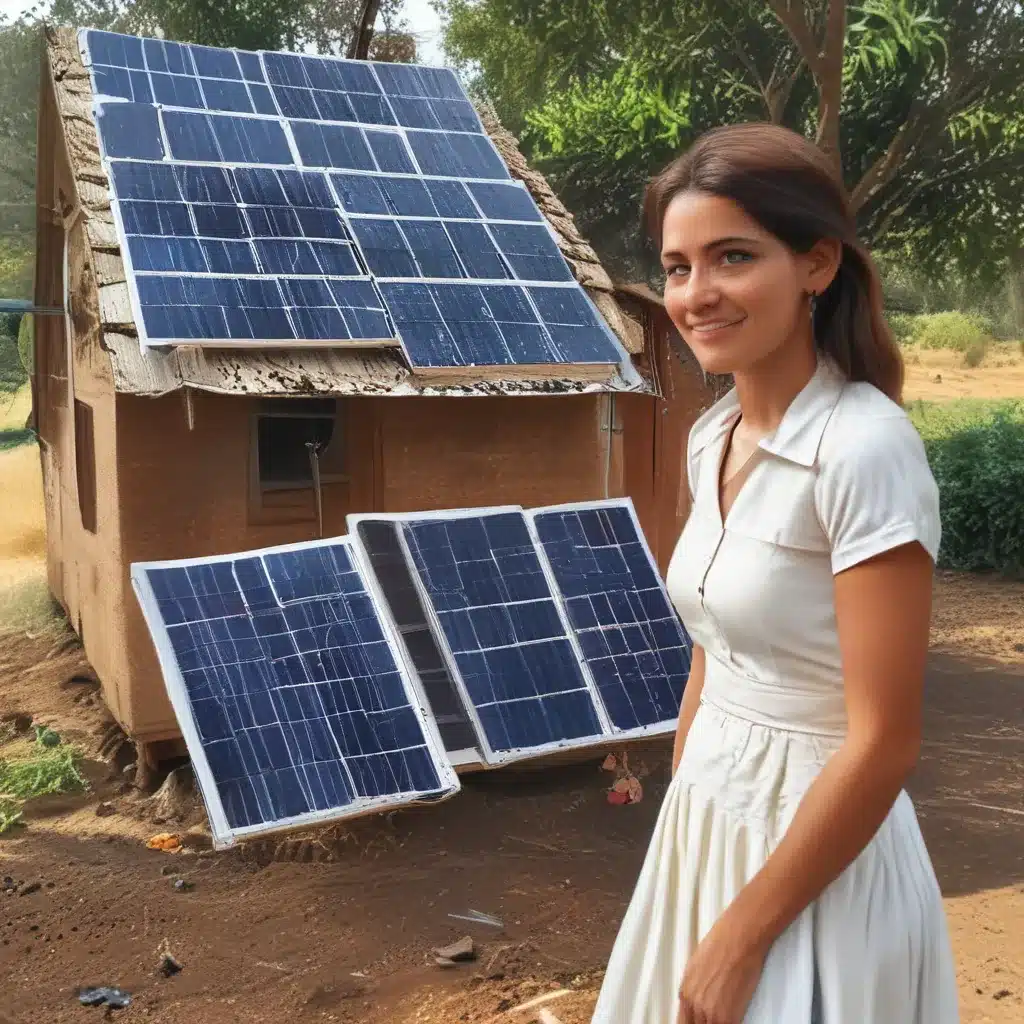
Powering Up the Countryside: How Rural Communities Are Embracing Renewable Energy
As I gaze out over the vast, rolling fields of my family’s farm in rural Nebraska, I can’t help but feel a sense of pride and excitement about the changes taking place in our local energy landscape. Gone are the days of solely relying on the grid, with its fluctuating prices and vulnerability to outages. Instead, our community is embracing a new era of clean, affordable, and resilient power – thanks in large part to the Powering Affordable Clean Energy (PACE) program.
The PACE to a Brighter Future
The Inflation Reduction Act of 2022 has been a game-changer for rural communities like ours, providing $1 billion in budget authority and the capacity to loan up to $27 billion for the PACE program. This partially forgivable loan initiative, administered by the U.S. Department of Agriculture (USDA), is helping electric cooperatives, nonprofits, utility districts, local governments, and tribal nations across the country to install solar and battery storage projects.
As I learned from the Environmental and Energy Study Institute (EESI), the PACE program is a true lifeline for rural electric cooperatives like Midwest Electric Cooperative Corporation in Nebraska, La Plata Electric Association in Colorado, and Trico Electric Cooperative in Arizona. These cooperatives were among the first to secure PACE funding and are now poised to transform their energy landscapes.
Midwest Electric: Blazing a Trail in Nebraska
Midwest Electric, which serves a largely rural irrigation-based service territory in northwestern Nebraska, received a $139 million PACE loan to build a 35 MW solar array with a 4 MW-capacity battery. As Jayson Bishop, the cooperative’s general manager, explained to EESI, “The forgivable aspect of the PACE loan was very interesting for us and it will allow us to save a lot of money, so we decided to apply for a grant to build the solar array with battery storage.”
This project marks a significant shift for Midwest Electric, as the cooperative currently does not generate any electricity itself, instead relying on power from the Tri-State Generation Association. By building its own solar array and battery storage system, Midwest Electric will be able to generate locally-produced clean energy, create a diverse power portfolio, and even shave its monthly peak demand, ultimately reducing the fees charged by Tri-State.
La Plata Electric: Powering Colorado’s Rural Communities
Heading west to Colorado, we find La Plata Electric Association, which secured a $134 million PACE loan to expand its clean energy and resilient solutions. The cooperative plans to use the funds to build a 5 MW solar project paired with a 5 MW/20 MWh battery storage system.
As Dominic May, La Plata’s energy resource program architect, told EESI, “The electric batteries are a very exciting part of the clean energy project as it will allow La Plata to do energy arbitrage and peak shaving actions that we cannot do today.” By storing surplus solar energy during low-demand periods and dispatching it during high-demand times, La Plata can stabilize the grid, reduce emissions, and lower electricity costs for its members.
Moreover, the project’s location in an “energy community” within La Plata’s service territory will qualify it for an additional 40% loan forgiveness and a 40% clean energy tax incentive, making it even more affordable for the cooperative and its members.
Trico Electric: Transforming the Tucson Region
Traveling further west, we arrive at Trico Electric Cooperative, which serves nearly 48,000 members in the Tucson, Arizona area. Trico recently received an $835 million PACE loan to expand its solar and battery storage facilities, cementing its commitment to offering renewable energy options and reducing its reliance on fossil fuels.
As the USDA announced, Trico’s $104 million investment will include the installation of 33 MW of solar and 43 MW of battery storage capacity with up to 73 MWh of power discharge capacity, distributed across four strategic locations.
“These projects will provide affordable, sustainable, and reliable clean energy solutions to our co-op members,” said Brian Heithoff, Trico’s CEO and general manager. “This is a once-in-a-generation opportunity to strengthen our system, generate more renewable energy, and improve our grid system.”
Embracing the Power of Partnerships
One of the key factors enabling these rural electric cooperatives to take advantage of the PACE program is the support and guidance they’ve received from organizations like the Environmental and Energy Study Institute (EESI) and the National Rural Electric Cooperative Association (NRECA).
As Jayson Bishop from Midwest Electric mentioned, “We received a lot of information about the program from the NRECA and the Rural Utilities Service. The forgivable aspect of the PACE loan was very interesting for us, and it will allow us to save a lot of money, so we decided to apply for a grant to build the solar array with battery storage.”
These partnerships have been crucial in helping rural electric cooperatives navigate the complexities of the PACE program and secure the necessary funding to bring their clean energy visions to life.
Powering a Brighter Future, Together
As I reflect on the transformative changes unfolding in our rural communities, I can’t help but feel a sense of optimism and pride. By embracing affordable solar energy solutions, our local electric cooperatives are not only reducing their carbon footprint and saving money for their members, but they’re also enhancing the resilience and reliability of our power grid.
These partnerships and initiatives are a testament to the ingenuity and determination of rural America. Solar As Systems Inc., a local solar energy solutions provider, has been an invaluable partner in helping our community navigate this transition, offering expertise, support, and innovative technologies to maximize the benefits of these clean energy projects.
Together, we are shaping a future where rural living is synonymous with sustainable, affordable, and resilient power – a future that is not only better for our environment but also for the well-being of our communities. As the sun rises on a new era of rural energy, I can’t wait to see what the future holds.


